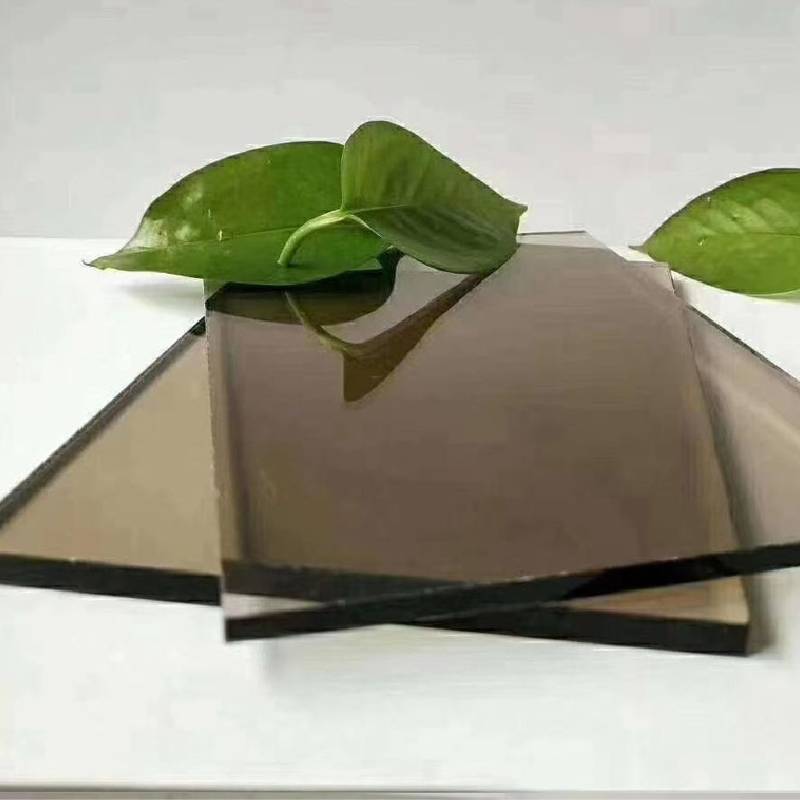Understanding the Differences Between Normal Glass and Tempered Glass
Glass is a fundamental material in various industries, with applications ranging from architecture to automotive design. When discussing glass, it's essential to understand the difference between normal (or annealed) glass and tempered glass, as each type has its unique properties, advantages, and applications.
Normal Glass
Normal glass, also known as annealed glass, is the most common form of glass. It is made by heating raw materials—primarily silica sand, soda ash, and limestone—to high temperatures until they melt and then slowly cooling the material to relieve internal stresses. This gradual cooling process produces a uniform product that can be easily cut, shaped, and finished.
However, normal glass has some inherent weaknesses. It is susceptible to thermal stress and can break easily under sudden impact or temperature fluctuations. When broken, normal glass tends to shatter into sharp, jagged pieces, presenting a safety hazard. These characteristics limit its use in environments where strength and safety are critical.
Tempered Glass
Tempered glass is a type of safety glass that has been treated through a process of extreme heating and rapid cooling. This process, known as tempering, increases the glass's strength and durability. Tempered glass is about five to six times stronger than normal glass of the same thickness and can withstand higher temperatures and sudden changes in temperature without breaking.
normal glass and tempered glass
When tempered glass does break, it shatters into small, blunt pieces rather than sharp shards. This characteristic significantly reduces the risk of injury, making it an ideal choice for applications such as shower doors, glass doors and tables, and facades for buildings.
Applications and Advantages
Due to its enhanced strength, tempered glass is often used in settings where safety is a paramount concern. It is commonly used in automobile windows, glass doors, and facades of buildings. In addition to safety, tempered glass is also used in situations where glass must endure higher temperatures, such as in oven doors.
Normal glass, on the other hand, is typically used in applications where cost and appearance are more critical than strength and safety. Common uses include picture frames, windows in low-risk environments, and decorative glass items.
Conclusion
In conclusion, while both normal glass and tempered glass serve essential roles in various industries, their properties and applications differ significantly. Normal glass is more affordable and easier to work with; however, it lacks the strength and safety features provided by tempered glass. The choice between the two depends on the specific needs of a project—whether that be cost-effectiveness or safety and durability. Understanding these differences can help consumers and industry professionals make informed decisions when selecting the appropriate type of glass for their needs. Whether you prioritize aesthetics, safety, or budget, recognizing the distinct characteristics of normal and tempered glass is crucial in finding the right material for any application.
 Afrikaans
Afrikaans  Albanian
Albanian  Amharic
Amharic  Arabic
Arabic  Armenian
Armenian  Azerbaijani
Azerbaijani  Basque
Basque  Belarusian
Belarusian  Bengali
Bengali  Bosnian
Bosnian  Bulgarian
Bulgarian  Catalan
Catalan  Cebuano
Cebuano  Corsican
Corsican  Croatian
Croatian  Czech
Czech  Danish
Danish  Dutch
Dutch  English
English  Esperanto
Esperanto  Estonian
Estonian  Finnish
Finnish  French
French  Frisian
Frisian  Galician
Galician  Georgian
Georgian  German
German  Greek
Greek  Gujarati
Gujarati  Haitian Creole
Haitian Creole  hausa
hausa  hawaiian
hawaiian  Hebrew
Hebrew  Hindi
Hindi  Miao
Miao  Hungarian
Hungarian  Icelandic
Icelandic  igbo
igbo  Indonesian
Indonesian  irish
irish  Italian
Italian  Japanese
Japanese  Javanese
Javanese  Kannada
Kannada  kazakh
kazakh  Khmer
Khmer  Rwandese
Rwandese  Korean
Korean  Kurdish
Kurdish  Kyrgyz
Kyrgyz  Lao
Lao  Latin
Latin  Latvian
Latvian  Lithuanian
Lithuanian  Luxembourgish
Luxembourgish  Macedonian
Macedonian  Malgashi
Malgashi  Malay
Malay  Malayalam
Malayalam  Maltese
Maltese  Maori
Maori  Marathi
Marathi  Mongolian
Mongolian  Myanmar
Myanmar  Nepali
Nepali  Norwegian
Norwegian  Norwegian
Norwegian  Occitan
Occitan  Pashto
Pashto  Persian
Persian  Polish
Polish  Portuguese
Portuguese  Punjabi
Punjabi  Romanian
Romanian  Russian
Russian  Samoan
Samoan  Scottish Gaelic
Scottish Gaelic  Serbian
Serbian  Sesotho
Sesotho  Shona
Shona  Sindhi
Sindhi  Sinhala
Sinhala  Slovak
Slovak  Slovenian
Slovenian  Somali
Somali  Spanish
Spanish  Sundanese
Sundanese  Swahili
Swahili  Swedish
Swedish  Tagalog
Tagalog  Tajik
Tajik  Tamil
Tamil  Tatar
Tatar  Telugu
Telugu  Thai
Thai  Turkish
Turkish  Turkmen
Turkmen  Ukrainian
Ukrainian  Urdu
Urdu  Uighur
Uighur  Uzbek
Uzbek  Vietnamese
Vietnamese  Welsh
Welsh  Bantu
Bantu  Yiddish
Yiddish  Yoruba
Yoruba  Zulu
Zulu 

